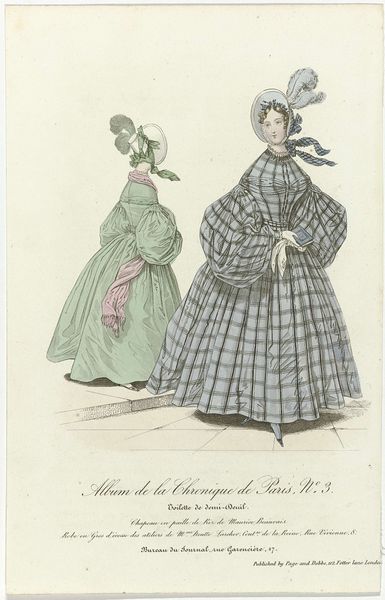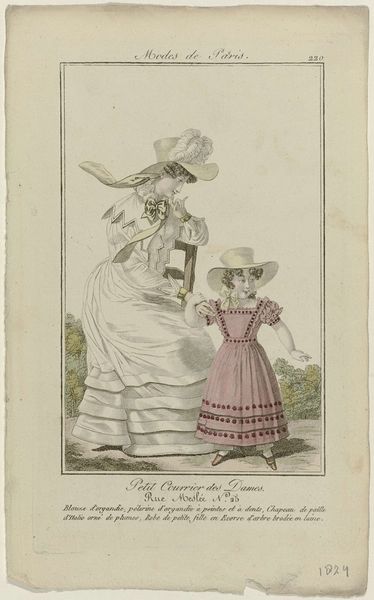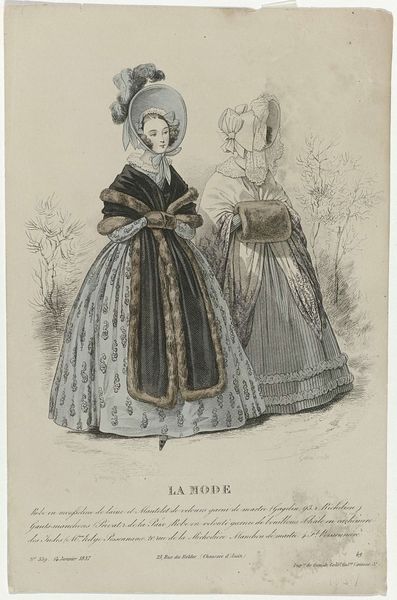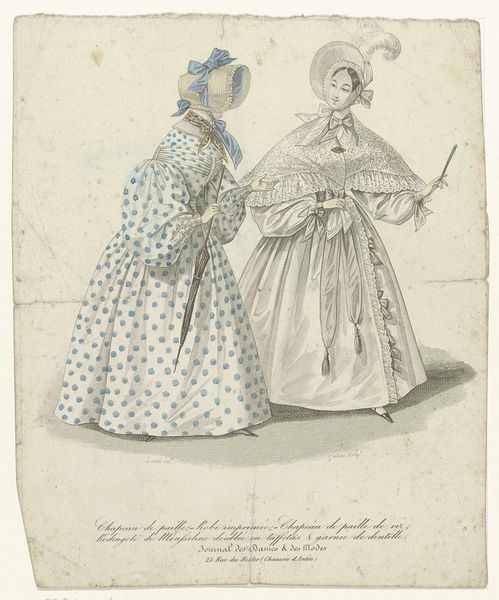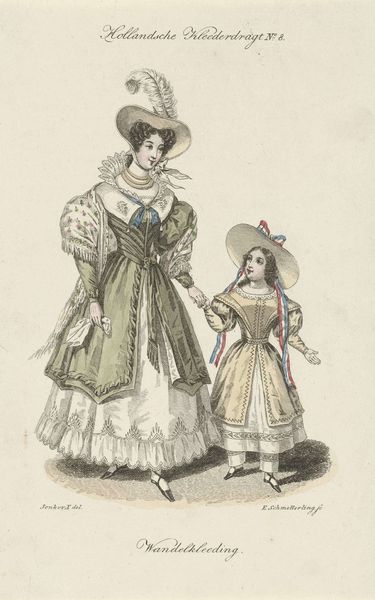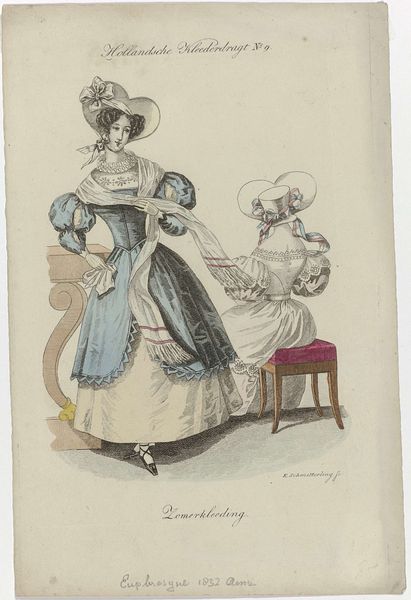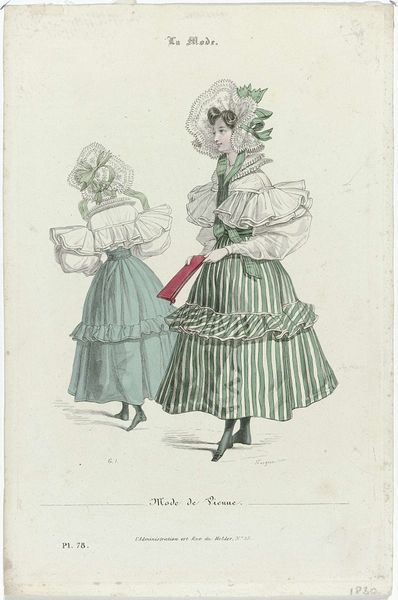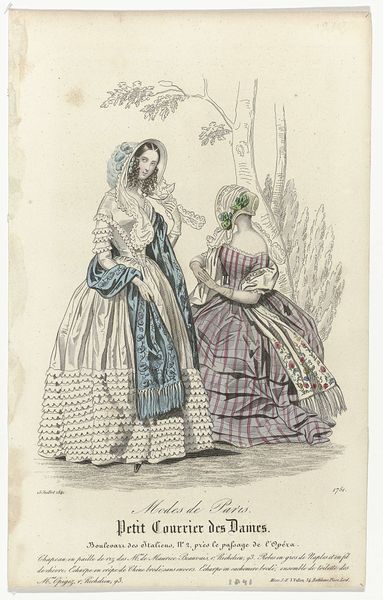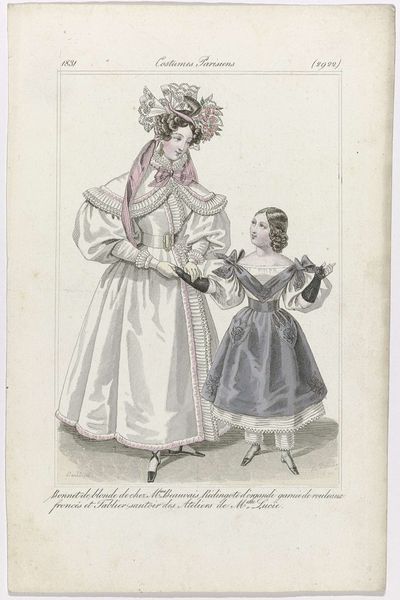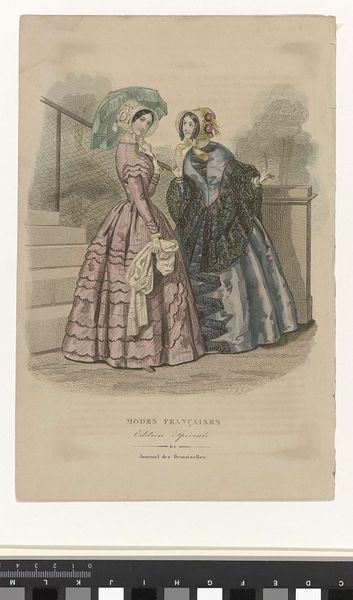
drawing, print
#
portrait
#
drawing
# print
#
genre-painting
#
fashion sketch
#
dress
Dimensions: height 226 mm, width 150 mm
Copyright: Rijks Museum: Open Domain
This fashion plate was printed in Paris in 1836, using a combination of engraving and hand-coloring. The main element is the play of textiles: satin for the redingote, or coat-dress, trimmed with marten fur. Consider the labor embedded in this image. The engraver needed skill to render the textures convincingly; so too did the colorist, who carefully applied washes to bring the design to life. But of course, the garment itself depended on a whole network of skilled makers: spinners, weavers, dyers, and seamstresses. Each of them contributed to the aura of luxury on display. The fashion plate was an early form of advertising, designed to stimulate desire. It helped to drive consumption, and depended on a vast, often invisible workforce. So while this image presents an idealized vision of feminine elegance, it also hints at the complex realities of labor, class, and capitalist production that underpinned Parisian society. Appreciating the artistry and the making, gives us a fuller appreciation of the artwork and its time.
Comments
No comments
Be the first to comment and join the conversation on the ultimate creative platform.

